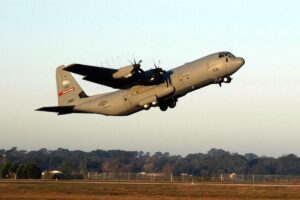Simplifying ARINC 429 Wiring: Tips and Techniques
Introduction
ARINC 429 is the primary data bus standard used in commercial and transport aircraft avionics. Understanding and implementing proper ARINC 429 wiring is essential for ensuring seamless data transmission between avionics components. A well-implemented wiring system reduces the risk of communication failures, enhances signal integrity, and ensures compliance with aviation regulations. This white paper outlines best practices, key considerations, and troubleshooting techniques for effective ARINC 429 wiring, helping engineers and technicians optimize their avionics installations.
Understanding ARINC 429
What is ARINC 429?
ARINC 429 is a unidirectional, point-to-point data bus protocol designed for communication between avionics equipment. It operates using a twisted-pair differential signaling method to ensure data integrity and reduce electromagnetic interference (EMI). The protocol is widely used in commercial aircraft to facilitate reliable data transmission between components such as flight management systems, navigation units, and engine monitoring systems. ARINC 429’s simplicity and effectiveness make it a critical standard in modern aviation.
Basic Components of ARINC 429 Wiring
- Transmitters and Receivers: Each ARINC 429 bus consists of a single transmitter and up to 20 receivers. This unidirectional communication ensures a simple and organized data flow, preventing data collisions and maintaining system stability.
- Twisted-Pair Wiring: Signals are transmitted over a twisted pair of wires to minimize noise. Twisting the wires together helps cancel out electromagnetic interference, improving the robustness of the communication system.
- Shielding: Proper shielding is required to protect against EMI. Shielding prevents external electrical noise from affecting the signal and ensures compliance with aviation safety standards.
ARINC 429 Wiring Best Practices
Choosing the Right Wire
Selecting the correct wire gauge and shielding type is critical for optimal performance. ARINC 429 typically uses:
- 24 or 22 AWG twisted-pair wire for signal transmission, as these gauges provide a good balance between flexibility and durability.
- Foil and braided shielding to minimize EMI, ensuring that signals remain clear and interference-free even in high-electromagnetic environments such as aircraft fuselages.
Proper Shielding and Grounding
Shielding should be grounded at one end to prevent ground loops while still providing adequate EMI protection. Ground loops can introduce unwanted noise into the system, degrading signal quality and leading to potential malfunctions in avionics communication.
Maintaining Correct Wiring Lengths
Excessive wiring lengths can lead to signal degradation. Keep wiring as short as practical and follow manufacturer guidelines on maximum cable lengths. Long cables can introduce resistance and capacitance that may distort signals, causing errors in data transmission.
Ensuring Proper Polarity
ARINC 429 uses a differential signal with A (HI) and B (LO) lines. Incorrect polarity can cause communication failures, leading to misinterpretations of data. Proper identification and connection of these lines are crucial for maintaining system integrity.
Installation Techniques
Wire Routing and Separation
- Separate signal wires from power cables to reduce noise interference. Power cables can introduce high-frequency noise, which may affect signal clarity.
- Follow standard aviation wiring guidelines, keeping ARINC 429 wires at least 6 inches away from high-power lines. Maintaining proper spacing minimizes the risk of cross-talk and ensures compliance with electromagnetic compatibility (EMC) requirements.
Termination Resistors
- Resistors of 78 to 120 ohms should be installed at the receiving end to match the bus impedance. Proper termination prevents signal reflections, which can distort communication and cause data errors.
Connectors and Splicing
- Use aviation-grade connectors to ensure reliable connectivity. These connectors are designed to withstand vibrations and environmental stress commonly encountered in aircraft applications.
- Avoid splicing unless necessary, and if splicing is required, use soldered joints and heat-shrink tubing. Proper splicing techniques prevent signal loss and enhance the durability of wiring connections.
Common Wiring Issues and Troubleshooting
Signal Degradation
- Check for excessive cable lengths and impedance mismatches, as these can lead to weakened signals and errors in data transmission.
- Ensure proper shielding and grounding to maintain signal integrity and reduce susceptibility to external interference.
EMI and Noise Interference
- Ensure correct shielding techniques, including proper grounding and separation from noise-generating components.
- Separate ARINC 429 wires from high-power cables to prevent unwanted noise that can affect signal reliability.
Polarity Reversal
- Use an oscilloscope to verify correct A (HI) and B (LO) wiring. Swapping these connections can lead to incorrect data interpretation and system malfunctions.
Testing and Validation
Continuity and Resistance Testing
- Use a multimeter to check for open circuits and short circuits. Ensuring all connections are intact is critical for system functionality.
- Measure resistance to confirm correct termination values, preventing signal reflections and ensuring optimal transmission efficiency.
Oscilloscope Signal Verification
- Inspect signal waveform integrity to ensure proper voltage levels and timing. Deviations from expected waveforms can indicate wiring issues or improper termination.
System-Level Testing
- Perform functional tests with avionics equipment to verify end-to-end communication. This step ensures that the ARINC 429 bus is correctly wired and operational in its intended environment.
Conclusion
Proper ARINC 429 wiring is essential for reliable avionics communication, ensuring seamless data transmission between critical aircraft systems. By following best practices, such as selecting the correct wire gauge, implementing proper shielding techniques, and maintaining correct wiring lengths, engineers can prevent common issues like signal degradation and electromagnetic interference. Additionally, grounding and termination practices play a vital role in maintaining signal integrity and preventing data loss or corruption.
Thorough testing and validation, including continuity checks, resistance measurements, and oscilloscope waveform verification, help identify and resolve potential wiring issues before deployment. System-level testing ensures that the ARINC 429 bus functions correctly within its operational environment, providing the necessary reliability and efficiency required in aviation applications.
By adhering to these guidelines, avionics professionals can achieve a robust and efficient ARINC 429 wiring system that enhances overall aircraft safety, minimizes maintenance efforts, and ensures compliance with industry standards. Investing in proper wiring installation and testing not only improves performance but also extends the lifespan of avionics equipment, reducing the likelihood of unexpected failures during flight operations.
References
- ARINC Specification 429: Digital Information Transfer System
- FAA Advisory Circulars on Avionics Wiring Best Practices
- Industry Standards for EMI Reduction in Avionics





